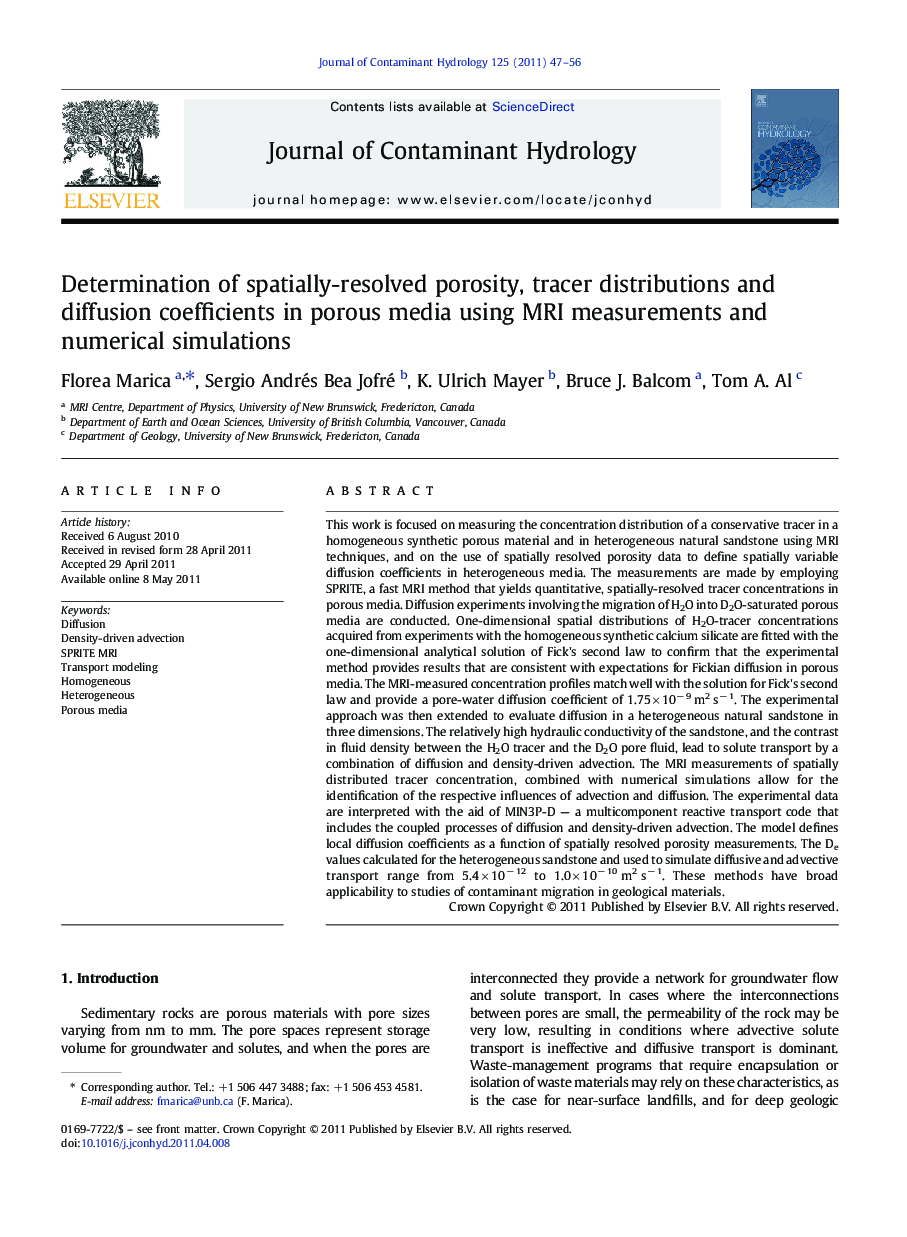| کد مقاله | کد نشریه | سال انتشار | مقاله انگلیسی | نسخه تمام متن |
|---|---|---|---|---|
| 4546963 | 1627076 | 2011 | 10 صفحه PDF | دانلود رایگان |

abstractThis work is focused on measuring the concentration distribution of a conservative tracer in a homogeneous synthetic porous material and in heterogeneous natural sandstone using MRI techniques, and on the use of spatially resolved porosity data to define spatially variable diffusion coefficients in heterogeneous media. The measurements are made by employing SPRITE, a fast MRI method that yields quantitative, spatially-resolved tracer concentrations in porous media. Diffusion experiments involving the migration of H2O into D2O-saturated porous media are conducted. One-dimensional spatial distributions of H2O-tracer concentrations acquired from experiments with the homogeneous synthetic calcium silicate are fitted with the one-dimensional analytical solution of Fick's second law to confirm that the experimental method provides results that are consistent with expectations for Fickian diffusion in porous media. The MRI-measured concentration profiles match well with the solution for Fick's second law and provide a pore-water diffusion coefficient of 1.75 × 10− 9 m2 s− 1. The experimental approach was then extended to evaluate diffusion in a heterogeneous natural sandstone in three dimensions. The relatively high hydraulic conductivity of the sandstone, and the contrast in fluid density between the H2O tracer and the D2O pore fluid, lead to solute transport by a combination of diffusion and density-driven advection. The MRI measurements of spatially distributed tracer concentration, combined with numerical simulations allow for the identification of the respective influences of advection and diffusion. The experimental data are interpreted with the aid of MIN3P-D — a multicomponent reactive transport code that includes the coupled processes of diffusion and density-driven advection. The model defines local diffusion coefficients as a function of spatially resolved porosity measurements. The De values calculated for the heterogeneous sandstone and used to simulate diffusive and advective transport range from 5.4 × 10− 12 to 1.0 × 10− 10 m2 s− 1. These methods have broad applicability to studies of contaminant migration in geological materials.
Research highlights
► SPRITE MRI is used for quantitative measurements of tracer concentration in rocks.
► Time/space measurements were made for homogeneous and heterogeneous rocks.
► MIN3P was used for analysis of 3-D diffusion coefficient distributions.
Journal: Journal of Contaminant Hydrology - Volume 125, Issues 1–4, 1 July 2011, Pages 47–56